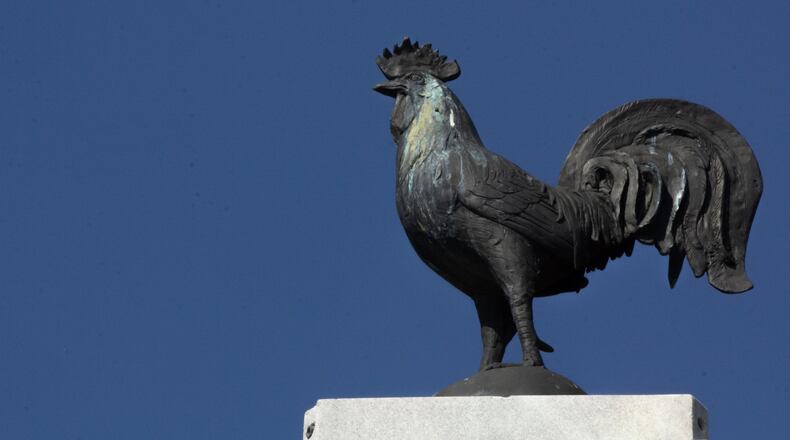China has finally reopened its doors to the U.S. poultry industry. Leading the charge? Chicken feet.
Or paws, as some in the poultry world call them.
They could scratch out nearly a billion dollars in new revenue, by one industry estimate, after China announced last week that it will no longer ban U.S. chicken. Chinese purchases of more meaty parts of chicken would add another billion dollars beyond that, according to the USA Poultry & Egg Export Council. Both are particularly good for Georgia, the nation's biggest chicken producer.
China once was the dominant buyer of edible U.S. chicken feet. Street sellers and shops sold them as a gristly snack often steamed and marinated in sauce. When China banned U.S. poultry nearly five years ago after an outbreak of avian influenza, the market for feet tripped badly.
Chicken wings go for a premium in the United States. Georgia chicken producers discovered there are limits on global interest in gnawing on chicken paws.
So the leftover have largely gone to rendering plants, a bottom-dollar destination where parts are ground up for use in pet foods and fertilizers.
Chicken feet headed that way go for about a nickel a pound. Compare that to 87 cents a pound for those aimed at human mouths, according to the export council.
“Our industry is very happy with this new opportunity,” said Jim Sumner, the president of the export council, which is based in Georgia.
Not every chicken foot will make the cut for Chinese markets, though, he said. “You wouldn’t want to eat an inferior chicken foot.”
U.S. chickens are a particular draw because they have been designed to grow big, which in addition to bigger breasts, wings and legs also tend to lead to bigger feet than international rivals can produce, Sumner said. “Size matters here.”
Tastes here and abroad continue to morph. So while chicken feet have yet to take flight with many U.S. diners, they might one day. For now, local chicken industry players are hoping China’s appetite for chicken will expand to include more of the bird.
The nation was once one of the largest international markets for U.S. chicken, said Mike Giles, the president of the Georgia Poultry Federation. “It was an important market for us, and it can be again.”
Georgia growers will have to concentrate on growing more and heavier chicken to meet the demand, he said.
China still has tariffs on U.S. chicken and more are possible, according to Sumner. But he suggested they will do little to curtail demand.
African swine fever has decimated China’s supply of pigs and sent pork prices soaring. Sumner contends that will create more of a market for U.S. chicken in that nation.
Meanwhile, the U.S. recently pushed ahead with plans to allow imports of products made from chicken slaughtered in China.
“What goes around comes around,” Sumner said.
About the Author
The Latest
Featured


